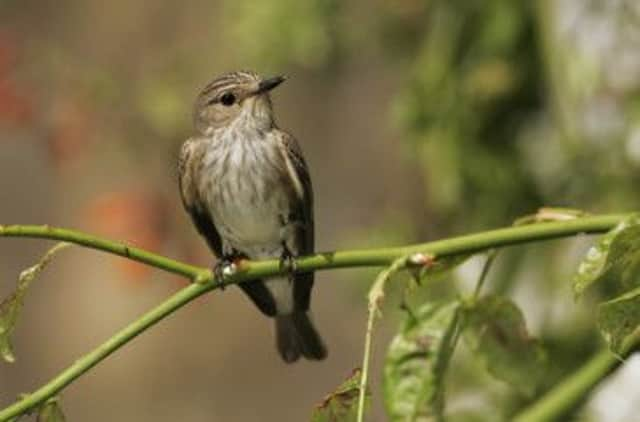Signs of better times for insect snatchers


It seems to have been a good year for them - the warm wet summer has provided plenty of insects to feed on and they have been reported in many places.
Around 50 spotted flycatchers, adults feeding young, were reported in the trees around the church in Studley Royal park, North Yorkshire. This is possibly a post breeding gathering of family groups ahead of migration and is in contrast with the rest of the summer when spotted flycatchers are solitary birds or just consort with a mate.
Advertisement
Hide AdAdvertisement
Hide AdThey also flock on migration - on the morning of June 1 last year more than 1,000 were counted at the Portland Bill Bird Observatory in Dorset.
The indications that this has been a good breading season are very encouraging, considering that spotted flycatchers have been in decline since the 1960s. With an 86 per cent fall in numbers, they are red listed as a bird of maximum conservation concern.
Spotted flycatchers are one of the latest arriving of our spring migrants, not reaching here until mid-May when the numbers of flying insects are reaching a peak.
They are fairly undistinguis-hed in appearance, being pale-brown with an off-white breast streaked with darker grey and with a streaky forehead. The name spotted is perhaps more aptly applied to the young birds which have pale flecks on the mantle and scapulars.
Advertisement
Hide AdAdvertisement
Hide AdBut they are much more entertaining when fly catching, flying out every 20 seconds or so from the same concealed perch to snatch flying insects.
Despite the fall in numbers there are still some 155,000 pairs in Britain. Most will have gone in the next two weeks, heading through western France and Portugal before crossing the Mediterranean and making for West Africa and then Zaire for the winter.
Spotted and pied flycatchers on the move south from Scandinavia were reported along the Yorkshire coast at the weekend and last week a red-breasted flycatcher was seen at Filey.
There were also whinchats, redstarts, tree pipits, wheatears, chiffchaffs , willow warblers and large numbers of meadow pipits and two barred warblers at Flamborough.
Advertisement
Hide AdAdvertisement
Hide AdA black guillemot was reported on Tuesday in Filey Bay, a rare sight in the North Sea, and the first red-necked grebe of the autumn was seen off Hunmanby Gap. There were also a few sooty shearwaters and a Balearic shearwater.
Some 123 species were recorded over the weekend at the Spurn Migration Festival including up to four wrynecks and three barred warblers. Other wrynecks were seen at Robin Hood’s Bay, Flamborough, Kilnsea and Stone Creek.
One was reported inland near Lower Gorple reservoir, Calderdale while one in a garden at Burnham on Sea, Somerset was killed by a cat.
A pectoral sandpiper was seen at the Hatfield Moors and Old Moor reserves, South Yorkshire, one of several across the country over the weekend.